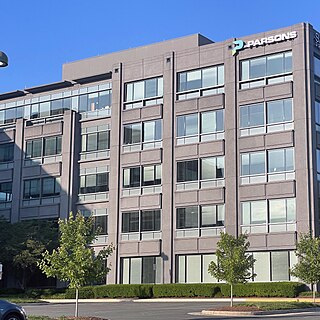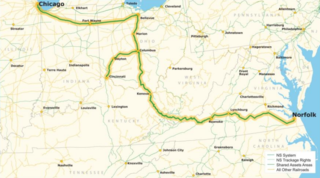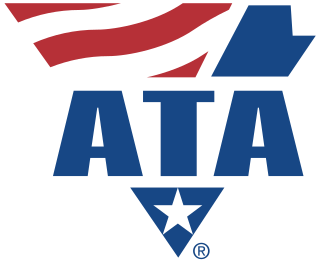
BNSF Railway is the largest freight railroad in the United States. One of six North American Class I railroads, BNSF has 36,000 employees, 33,400 miles (53,800 km) of track in 28 states, and over 8,000 locomotives. It has three transcontinental routes that provide rail connections between the western and eastern United States. BNSF trains traveled over 169 million miles in 2010, more than any other North American railroad.

Intermodal freight transport involves the transportation of freight in an intermodal container or vehicle, using multiple modes of transportation, without any handling of the freight itself when changing modes. The method reduces cargo handling, and so improves security, reduces damage and loss, and allows freight to be transported faster. Reduced costs over road trucking is the key benefit for inter-continental use. This may be offset by reduced timings for road transport over shorter distances.

The Oakland Seaport is a major container ship facility located in Oakland, California, in the San Francisco Bay. It is operated by the Port of Oakland port authority along with the San Francisco Bay Oakland International Airport. It was the first major port on the Pacific Coast of the United States to build terminals for container ships. As of 2022, it was the eighth busiest container port in the United States, behind the ports of Los Angeles, New York/New Jersey, Long Beach, Savannah, Houston, Virginia, and Seattle/Tacoma. Development of an intermodal container handling system in 2002 after over a decade of planning and construction positions the Oakland Seaport for further expansion of the West Coast freight market share. In 2019 it ranked 8th in the United States in the category of containers.

The Intermodal Surface Transportation Efficiency Act of 1991 is a United States federal law that posed a major change to transportation planning and policy, as the first U.S. federal legislation on the subject in the post-Interstate Highway System era.

The Southern Sydney Freight Line (SSFL) is a freight only railway line in the south-western suburbs of Sydney, Australia. The line was built to segregate freight trains from the Sydney Trains network. It forms part of a dedicated freight only corridor between Port Botany and Macarthur. The line is managed by the Australian Rail Track Corporation.

The Alameda Corridor is a 20-mile (32 km) freight rail "expressway" owned by the Alameda Corridor Transportation Authority that connects the ports of Los Angeles and Long Beach with the transcontinental mainlines of the BNSF Railway and the Union Pacific Railroad that terminate near downtown Los Angeles, California. Running largely in a trench below Alameda Street, the corridor was considered one of the region's largest transportation projects when it was constructed in the 1990s and early 2000s.
The Cross-Harbor Rail Tunnel is a proposed freight rail transport tunnel under Upper New York Bay in the Port of New York and New Jersey between northeastern New Jersey and Long Island, including southern and eastern New York City.

Parsons Corporation is an American multinational technology-focused defense, intelligence, security, and infrastructure engineering firm headquartered in Chantilly, Virginia. The company was founded in 1944. As of 2023, Parsons employs more than 18,000 professionals across 30 countries.

HNTB Corporation is an American infrastructure design firm. Founded in 1914 in Kansas City, Missouri, HNTB began with the partnership made by Ernest Emmanuel Howard with the firm Waddell & Harrington, founded in 1907.

The Heartland Corridor is a public-private partnership between the Norfolk Southern Railway (NS) and the Federal Highway Administration and three U.S. states to improve railroad freight operations.
The Puget Sound Regional Council (PSRC) is a metropolitan planning organization that develops policies and makes decisions about transportation planning, economic development, and growth management throughout the four-county Seattle metropolitan area surrounding Puget Sound. It is a forum for cities, towns, counties, transit agencies, port districts, Native American tribes, and state agencies to address regional issues.

A well car, also known as a double-stack car, is a type of railroad car specially designed to carry intermodal containers used in intermodal freight transport. The "well" is a depressed section that sits close to the rails between the wheel trucks of the car, allowing a container to be carried lower than on a traditional flatcar. This makes it possible to carry a stack of two containers per unit on railway lines wherever the structure gauge assures sufficient clearance.
The Virginia Port Authority (VPA) is an autonomous agency of the Commonwealth of Virginia that owns The Port of Virginia, a group of facilities with their activity centered on the harbor of Hampton Roads, Virginia.

The American Trucking Associations (ATA), founded in 1933, is the largest national trade association for the trucking industry. ATA represents more than 37,000 members covering every type of motor carrier in the United States through a federation of other trucking groups, industry-related conferences, and its 50 affiliated state trucking associations. Former Governor of Kansas Bill Graves was replaced by Chris Spear as the ATA's president and CEO in July 2016.

The Crescent Corridor is a railroad corridor operated by the Norfolk Southern Railway (NS). The project, first proposed in 2007, and scheduled for completion by 2020, spans 13 states from New York to Louisiana. It is a private-public partnership between Norfolk Southern and the various state and federal governments.
National Gateway is a multi-stage railroad construction project in the United States promoted by CSX Transportation, a unit of CSX Corporation. It is designed to improve rail connections between ports in the U.S. mid-Atlantic seaboard and the Midwest by upgrading bridges and tunnels to allow taller freight trains. In 2008 the company announced its plans to invest $300 million, and is seeking investment from state governments and the U.S. federal government of an additional $400 million as a public-private partnership. Phase 1 of the $850 million project, between CSX's existing terminal in Chambersburg, Pennsylvania, and its hub facility in Northwest Ohio. was completed in September 2013.

Double-stack rail transport is a form of intermodal freight transport in which railroad cars carry two layers of intermodal containers. Invented in the United States in 1984, it is now being used for nearly seventy percent of United States intermodal shipments. Using double stack technology, a freight train of a given length can carry roughly twice as many containers, sharply reducing transport costs per container. On United States railroads special well cars are used for double-stack shipment to reduce the needed vertical clearance and to lower the center of gravity of a loaded car. In addition, the well car design reduces damage in transit and provides greater cargo security by cradling the lower containers so their doors cannot be opened. A succession of larger container sizes have been introduced to further increase shipping productivity in the United States.

From the start of railroading in America through the first half of the 20th century, New York City and Long Island were major areas for rail freight transportation. However, their relative isolation from the mainland United States has always posed problems for rail traffic. Numerous factors over the late 20th century have caused further declines in freight rail traffic. Efforts to reverse this trend are ongoing, but have been met with limited success.
Urban freight distribution is the system and process by which goods are collected, transported, and distributed within urban environments. The urban freight system can include seaports, airports, manufacturing facilities, and warehouse/distribution centers that are connected by a network of railroads, rail yards, pipelines, highways, and roadways that enable goods to get to their destinations.
William Walter Hay (1908–1998) was an American civil engineer and professor remembered with the annual American Railway Engineering and Maintenance-of-Way Association (AREMA) Hay Award recognizing outstanding achievements in railway engineering.













